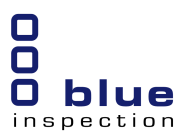2025-03-19
What is expected of API & medicinal product manufacturers to prevent cross-contamination with beta-lactams.
Guideline requirements and observations from recent audits.
In the production of APIs and medicinal products, pharmaceutical companies must avoid cross-contamination with beta-lactams.
Various organizational and technical measures are taken in production facilities for medicinal products and final powder processing of APIs in order to prevent such cross-contamination. For most APIs, strategies generally include the use of production rooms and equipment on campaign basis, cleaning validation for multipurpose, dedicated or single-use equipment, HEPA-filtered air, along with air-locks and pressure cascades.
However, for certain highly sensitizing APIs such as ß-lactams, these standard measures may not sufficient.
What are the regulatory requirements?
According to EU GMP Part I for the production of medicinal products, dedicated facilities are required for beta-lactams. EU GMP Part II for API production specifies for penicillins and cephalosporins that dedicated production areas are required, such as facilities, air handling systems, and process equipment.
The US FDA, in turn, expects penicillin production operations to take place in separate facilities, with air handling systems that are distinct from those used for other human drugs. However, the FDA clarifies that separate buildings are not always necessary, as long as the section of the manufacturing facility dedicated to penicillin production is completely and comprehensively isolated from non-penicillin areas. Moreover, the FDA requires that non-penicillin drug products be tested for penicillin when cross-contamination risk exists, prohibiting products from reaching the market should detectable penicillin levels be found.
In 2013, the US FDA issued a guideline specifying that similar cross-contamination control strategies should apply to non-penicillin beta-lactam drugs. These non-penicillin beta-lactams include cephalosporins, penems (e.g., imipenem, meropenem), carbacephems (e.g., loracarbef), monobactams (e.g., aztreonam), beta-lactamase inhibitors (e.g., clavulanic acid, tazobactam, sulbactam), and intermediates such as 6-Aminopenicillanic acid (6-APA), a fermentation product used in penicillin synthesis. Furthermore, the FDA expects that manufacturing areas for different classes of sensitizing beta-lactams, such as penicillins and cephalosporins, be segregated.
2022 Guideline Revision
In June 2022, the FDA published a draft revision of the aforementioned guideline, with the following main difference: For penicillins and non-penicillin beta-lactams, complete and comprehensive separation from other drug manufacturing operations is still required. However, for non-antibacterial beta-lactams, the separation is now recommended, but not mandatory. Alternative cross-contamination prevention strategies may be considered if manufacturers provide robust data proving the absence of cross-contamination or can demonstrate that adverse reactions are highly unlikely. This data would need to be available for FDA assessment. A further difference is that in this draft under “non-antibacterial beta-lactam compounds” not only are beta-lactamase inhibitors (which are usually always combined with penicillins in one product) listed but also certain lipid lowering drugs (such as ezetimibe) and certain antiviral drugs (without example).
What are the audit expectations for manufacturers?
When auditing API or medicinal product manufacturers producing penicillins or other non-penicillin beta-lactams alongside other drugs at the same site, regulators will generally expect the following:
- Dedicated facilities with complete and comprehensive separation, including separate air handling systems, appropriate pressure cascades, and dedicated equipment to each class of drug.
- Definition of design and procedural controls to prevent cross-contamination, based on thorough risk management.
These controls typically include risk assessments for cross-contamination, well-designed material, personnel, and waste flows, as well as measures to prevent exhaust air from contaminating adjacent building air intakes. Additionally, a robust monitoring program for cross-contamination risks and clear spill response procedures are expected.
Interesting observation from recent audits
Recent audits of cell culture media manufacturers have revealed an interesting trend; some of these manufacturers also fill and pack penicillins for use in cell culture at the same site. Although the production of cell culture media is not covered by the previously mentioned guidelines, pharmaceutical companies that use these media to produce drug substances or products via cell culture are equally concerned about avoiding cross-contamination with beta-lactam antibiotics. This emphasizes the growing need for stringent control measures even outside the traditional scope of API manufacturing.
Should you require audits at API or medicinal product manufacturers and the topic of prevention of cross-contamination from beta-lactams is to be addressed, please contact us at blue inspection for further information.


